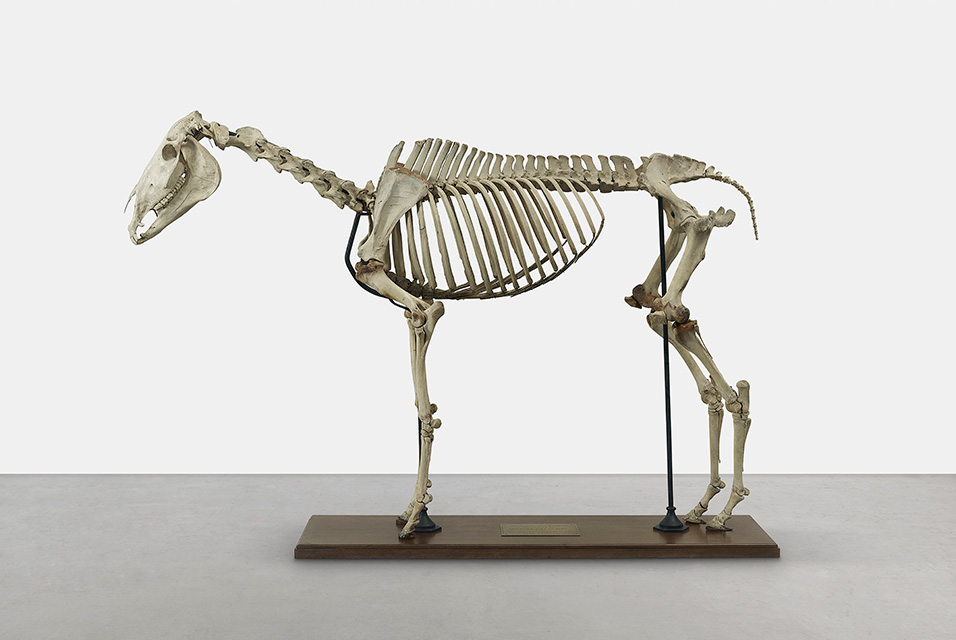Exhibition focuses on a significant period in George Stubbs career

Artdaily_THE HAGUE.- The Mauritshuis is presenting an exhibition about England’s most celebrated horse painter: George Stubbs (1724-1806). This artist established his reputation with exceptional compositions of horses, which he painted in an lifelike fashion that was unprecedented. An in-depth study of the horse’s anatomy, for which the artist dissected the animals himself, laid the foundations for his success. The exhibition George Stubbs – The man, the horse, the obsession brings together 13 paintings, 10 anatomical drawings and the skeleton of the most famous racehorse of all time: Eclipse. The extraordinary highlight of the exhibition is the enormous (2.92 x 2.46cm) portrait of the racehorse Whistlejacket of 1762: an iconic work in which Stubbs painted the horse against an entirely empty background. This is the first time that this masterpiece from The National Gallery in London has travelled to mainland Europe.
Painter of Horses
The exhibition focuses on a significant period in Stubbs’ career: the 1750s and 1760s. During this period, Stubbs quickly developed to become the leading horse painter in his country. His clients belonged to England’s elite – they owned large country houses with art collections, estates with stables and sometimes even stud farms. Equestrian sports were and continue to be a favourite pastime in England, a way of life even, and with his specialism, Stubbs had found a perfect niche in the art market. A special feature of Stubbs’ pictures is that he painted true portraits of horses (rather than paintings with horses in them), which were instantly recognisable to their owners. He knew like no other how to capture both the physical attributes of a horse and its character, with a great respect for the bond between humans and animals. A magnificent example of this is the portrait of the high-spirited stallion Blank, being held by his groom ‘Old Parnam’
Artist-Scientist
For Stubbs, the careful study of nature lay at the heart of his artistic endeavours. His unusual scientific approach made him a true artist of the Enlightenment. Thanks to his anatomical knowledge, Stubbs was able to paint horses in an unparalleled manner. This was the trump card that elevated him above his predecessors – and his contemporaries. In 1766 Stubbs published The Anatomy of the Horse, a pioneering book with detailed illustrations that brought the artist international acclaim: it became the standard work on equine anatomy. Examples of this book are on view in the exhibition, alongside rare anatomical drawings made by Stubbs.
Whistlejacket
The life-sized portrait of Whistlejacket is also on view in the exhibition. On account of its size, the perfect rendering of the horse’s body and the intriguing empty background, the painting is the best-loved work in Stubbs’ oeuvre. Whistlejacket was a racehorse belonging to one of Stubbs’ most important and wealthy clients: the prominent politician Charles Watson-Wentworth, 2nd Marquess of Rockingham. Stubbs painted a total of twelve works for him, four of which appear in the exhibition. The portrait of Whistlejacket, which today forms part of the collection of The National Gallery in London, has only been exhibited outside of the United Kingdom once before and the exhibition at the Mauritshuis marks its first appearance in mainland Europe.
Eclipse
Eclipse (1764-1789) was a thoroughbred racehorse that, thanks to his unmatched speed, won all its races between 1769 and 1770 and went down in history as ‘Eclipse first and the rest nowhere’. When people no longer dared to put up a horse against Eclipse in 1770, the animal became an extremely successful sire. Almost all of today’s thoroughbreds are descended from Eclipse, including one of the most famous American racehorses of the 20th century: Secretariat (1970-1989). After its death, Eclipse’s skeleton became part of the collection at the Royal Veterinary College. In the exhibition, Eclipse’s skeleton is being displayed together with a rare oil sketch that Stubbs made when the horse was still at the start of its distinguished career.
Mauritshuis
18th-century Dutch painting is a lesser-known, yet important part of the permanent collection and display at the Mauritshuis. With this exhibition, the museum is introducing the work of one of the most important 18th-century English artists to the Dutch public. The oeuvre of George Stubbs relates to important 17th-century artworks in the Mauritshuis, such as Rembrandt’s Anatomy Lesson of Dr Nicolaes Tulp, the life-sized Bull by Paulus Potter and the work of the horse painter Philips Wouwerman, to whom the museum dedicated a retrospective exhibition in 2009-2010. Comparisons between these paintings in the permanent collection of the Mauritshuis and the working methods and style of Stubbs reveal how European painting, partly under the influence of the Enlightenment, developed in the 18th century.
Collaboration with the MK Gallery
The exhibition is being jointly organised with the MK Gallery in Milton Keynes (United Kingdom), where the exhibition George Stubbs: ‘all done from Nature’ was on view from 11 October 2019 until 26 January 2020. That exhibition provided an overview of Stubbs’ entire oeuvre, while the Mauritshuis is focusing on Stubbs at the peak of his career.
